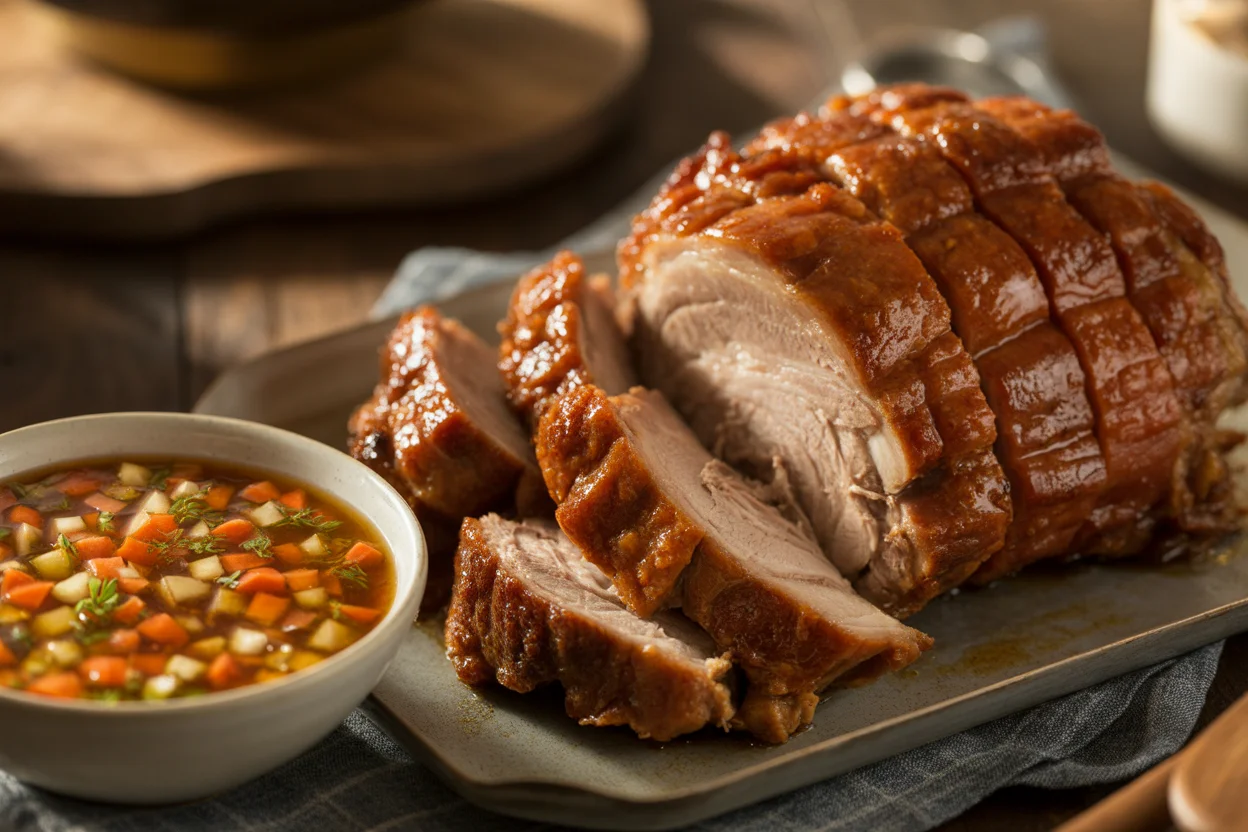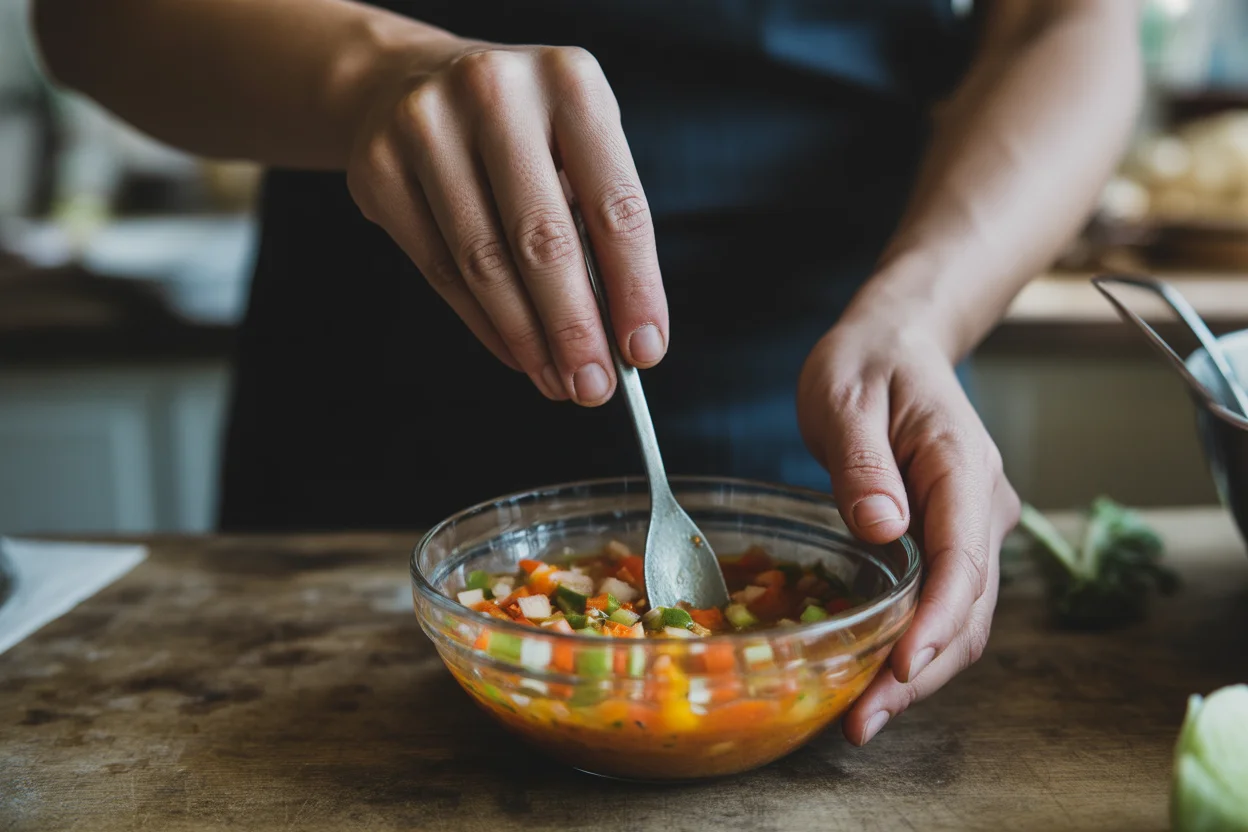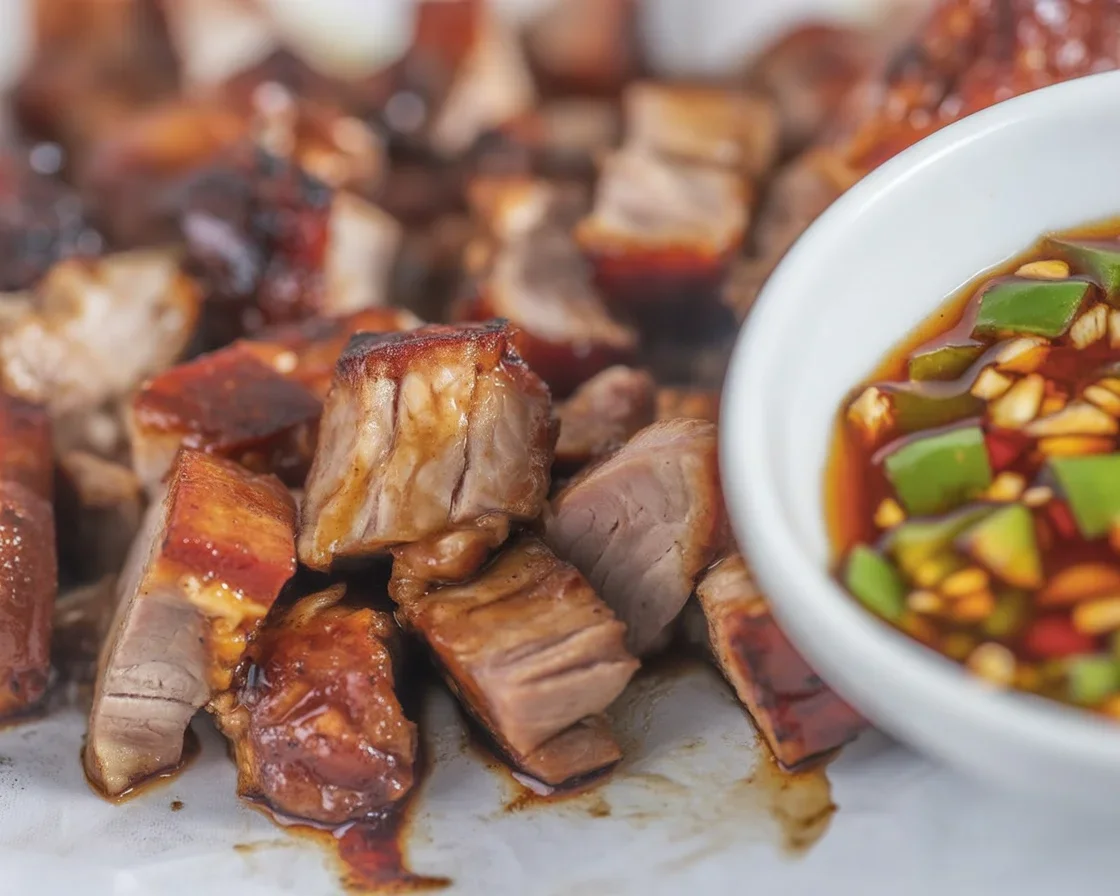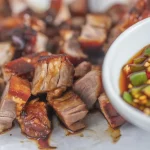Filipino inihaw na baboy always comes up whenever big gatherings or family lunches are in full swing. Maybe you’ve stood there at a party, plate in hand, hungry, watching the smoke rise and thinking, “How the heck do they make that pork BBQ taste so drool-worthy?” Honestly, I’ve wondered, too. After some trial and error (and a little help from family), I cracked it. If you’re craving juicy, savory-sweet pork, stick around. Hungry for more Filipino fares? You might want to check out this Filipino Pork BBQ with Banana Ketchup Glaze for a cool twist, or cozy up with a Filipino Tinola with Spinach Chicken on a rainy day.

Introduction to Filipino BBQ
There’s really nothing like Filipino grilled pork BBQ, or as we call it, “Filipino inihaw na baboy.” The scent alone sends me straight to backyard parties with titos cracking jokes and little cousins sneaking extra skewers. You’ll find this at birthdays, fiestas, maybe even your kid’s graduation. What makes it stand out? That magical marriage of sweet, smoky, and kinda tangy.
Filipino inihaw na baboy isn’t your regular, boring grilled pork. There’s a certain vibe to it, from the special marinade (everyone’s “secret”) to the smoky char. Don’t get fussy about fancy grills or gadgets. In the Philippines, you’ll see makeshift grills by the roadside, even a metal rack balanced over bricks. That’s the spirit.
Just fair warning: if someone in your family claims their BBQ is “the best,” get ready for lighthearted arguments. For me, it’s all about nailing the flavors and making sure each skewer is caramelized, not burnt (yeah, easier said than done).

Key Ingredients
You don’t need to go on a wild grocery hunt. Most Filipino inihaw na baboy magic comes down to common pantry items (plus pork, obviously). Here’s what you’re gonna need:
- Pork – I use pork belly or shoulder. Lean stuff is ok, but fat brings flavor. Just trust me on this.
- Soy sauce – For that salty-savory base. Don’t skimp on this.
- Brown sugar – Makes it sweet and helps caramelize when grilling.
- Banana ketchup – Filipino staple! Adds sweetness and a bit of color.
- Garlic – Lots of it, mashed or minced.
- Vinegar or calamansi juice – Brightens the flavors and keeps things from getting heavy.
- Pepper – A few generous shakes.
- Optional: a splash of 7Up or Sprite (sounds odd but tenderizes and sweetens just right).
There’s really no strict science. Want it spicier? Toss in chili. No banana ketchup? Regular tomato ketchup will do in a pinch but, really, banana is best. Just don’t go wrestling with the ingredients list—go with what feels right.
Preparing Marinade
Alright, this is serious business. The marinade’s what makes Filipino inihaw na baboy really shine. There’s nothing complicated about it—just mix and marinate. I combine soy sauce, brown sugar, banana ketchup, vinegar (or calamansi juice), lots of garlic, and pepper in a big bowl. Sometimes, I add a dash of 7Up if I’m feeling nostalgic or lazy.
Slice your pork into thin, bite-sized strips (for skewers) or thicker slabs if you like a meatier bite. Chuck everything into the marinade, making sure the pork is totally coated (get in there with your hands if needed). And please, don’t skip on massaging the meat. Weird as it sounds, it helps.
Some families add onions, chili flakes, or bay leaves. I say, go wild, as long as the main players are there. Once it looks well mixed, stop fussing with it and cover the bowl. It’s ready for its nap in the fridge.
“I tried the marinade exactly like this and my pork BBQ disappeared in five minutes flat at our family reunion. Now everyone thinks I’m some kind of grilling genius. Thanks!” — Carla T.
Marinating Pork Overnight
If you ask me, patience is the real ingredient here. Marinating overnight is a gamechanger for Filipino inihaw na baboy. Eight hours, minimum. Overnight? Chef’s kiss! The longer you wait, the more those flavors burrow into the meat, making every bite pop with that iconic BBQ punch.
I usually mash the pork around in the marinade every so often, so nothing gets left out—every slice deserves some love. If you’re in a massive rush (been there), just aim for at least four hours, but don’t expect five-star restaurant status. Trust me, overnight just… works.
Stash it at the back of the fridge where it can really soak. And if someone in your house peeks and tries to take a piece early, give them the look. Discipline, my friend.
Grilling Techniques
Time to fire it up! You can use charcoal, a gas grill, or even a plain grill pan, but charcoal gets the best flavor for Filipino inihaw na baboy. That smoky goodness is unbeatable. Let the coals turn white and ashy before you start. Not enough heat or too much smoke? Just fan it with a piece of cardboard. (Old school but effective.)
Thread the pork onto skewers—don’t jam it tight; let each piece get a little space to char. Grill, flip, and brush on leftover marinade as you go for that shiny, sticky glaze.
Trick for super juicy meat? Don’t walk away from the grill. You gotta babysit it: flip every couple minutes and keep the heat from blazing up. Worst mistake is letting the sugar burn, so stay sharp. You’ll see those sizzle marks and a bit of charring—exactly what you want. Shoot, meat’s done once the centers aren’t pink.
Give ’em a quick rest after grilling. That helps keep them juicy inside.
Serving with Dipping Sauce
BBQ’s great, but dipping sauce nails the experience. The most classic sauce for Filipino inihaw na baboy is toyomansi—that’s just soy sauce, calamansi (or lemon), chopped onions, and maybe a chili for a little fire.
Sometimes I toss in tomatoes, a pinch of sugar, or even fresh garlic. Depends on the mood. Pour it into a saucer and set out for dipping or drizzle over the pork. Totally up to you.
The combo of smoky pork and zingy sauce? Tastes like home to me. Plus, dipping sauces always stir up debates at parties… “Yours is too salty,” or “Too sour!” Everyone’s a critic.
Party Tips
Serving Filipino inihaw na baboy at a get-together? Here’s what I always do, just to keep things drama-free and fun:
- Soak your bamboo skewers for at least 30 minutes, so they don’t light up like fireworks on the grill.
- Offer plenty of sauces—not everyone likes things spicy, so put out a mild and a hot version.
- Pair the BBQ with garlic fried rice or make it a “silog” breakfast for the next day.
- Slice extras for sandwiches or as a topping for salads if you somehow have leftovers (rare, honestly).
Honestly, people will hover by the grill, so bring out skewers in batches. Nothing impresses titas and titos more than fresh-off-the-coals goodness!
Common Questions
Q: Can I use chicken instead of pork?
A: For sure! Same marinade, just switch out the meat. It will taste awesome, promise.
Q: Do I really need banana ketchup?
A: If you can grab a bottle, YES. It adds a special sweet flavor that tomato ketchup just can’t match.
Q: What if I don’t have a charcoal grill?
A: No worries—use a gas grill or grill pan. You won’t get all the smoky goodness, but it’ll still taste plenty Filipino.
Q: Can I freeze the marinated pork?
A: Yup! Freeze it in the marinade and thaw overnight in the fridge. It actually helps the flavors soak in even more.
Q: What side dishes go with Filipino inihaw na baboy?
A: Garlic fried rice, pickled veggies, and maybe a little ensalada. That’s my go-to trio.

Wrapping things up
So that’s my real-deal take on Filipino inihaw na baboy (by the way, you can check out even more tips from favorites like Inihaw na Baboy – Panlasang Pinoy), and don’t miss this absolute winner for summer grilling Inihaw na Liempo (Filipino-style Grilled Pork Belly) – Kawaling Pinoy. With just a few fresh ingredients and a pinch of patience, you can bring those Filipino BBQ party vibes right to your table. Go on—fire up the grill, gather your folks, and dig in. And if you’re curious about other Filipino party staples, try pairing with classic garlic sinangag Filipino garlic fried rice for breakfast after. Happy grilling and masarap na kainan, kaibigan!
Filipino Inihaw na Baboy
Ingredients
For the Marinade
- 1 kg pork belly or shoulder Fatty cuts preferred for flavor
- 1/2 cup soy sauce Salty-savory base
- 1/4 cup brown sugar For sweetness and caramelizing
- 1/2 cup banana ketchup Filipino staple for color and sweetness
- 10 cloves garlic, minced Adds depth of flavor
- 1/4 cup vinegar or calamansi juice For brightness
- 1 tsp black pepper Adjust to taste
- 1/4 cup 7Up or Sprite Optional for added tenderness and flavor
For the Dipping Sauce
- 1/4 cup soy sauce Use toyomansi (soy sauce + calamansi) for authenticity
- 1 Tbsp calamansi or lemon juice Adjust to taste
- 2 Tbsp onion, chopped Optional for a crunch
- 1 pinch chili, optional For added heat
Instructions
Preparing Marinade
- Combine soy sauce, brown sugar, banana ketchup, vinegar (or calamansi juice), garlic, and pepper in a big bowl.
- Slice pork into thin strips for skewers and add to the marinade. Massage meat thoroughly.
- Cover the bowl and refrigerate to marinate overnight, or at least for 4 hours if short on time.
Grilling the Pork
- Prepare the grill, using charcoal for the best flavor; allow coals to turn white and ashy.
- Thread marinated pork onto skewers, leaving space between each piece.
- Grill, flipping occasionally, and brush with leftover marinade for extra glaze.
- Ensure pork is cooked through and not pink in the center. Allow to rest briefly before serving.
Serving
- Serve with dipping sauce made from soy sauce, calamansi, chopped onions, and optional chili.


3 thoughts on “Filipino Grilled Pork BBQ (Inihaw na Baboy) Recipe”